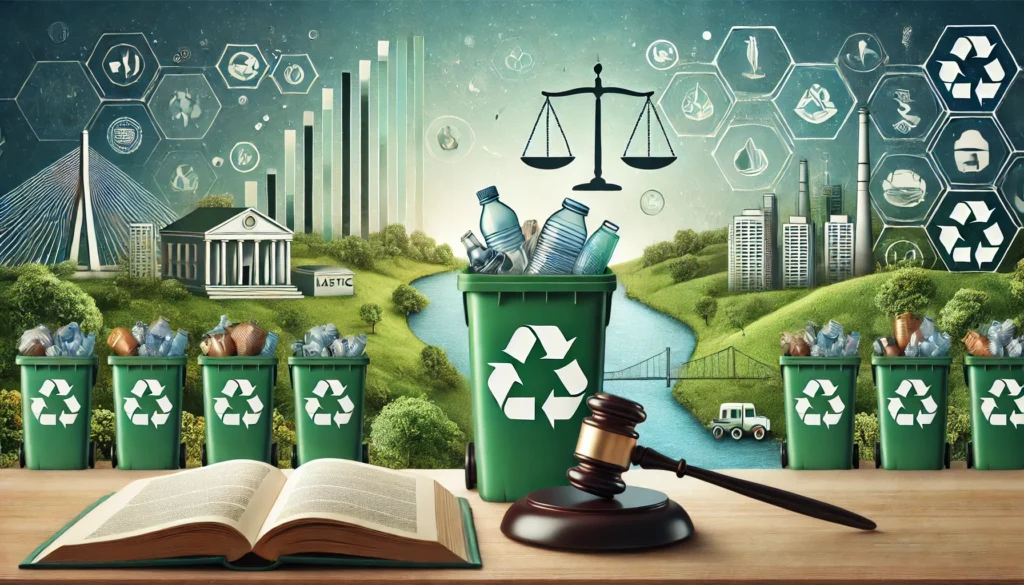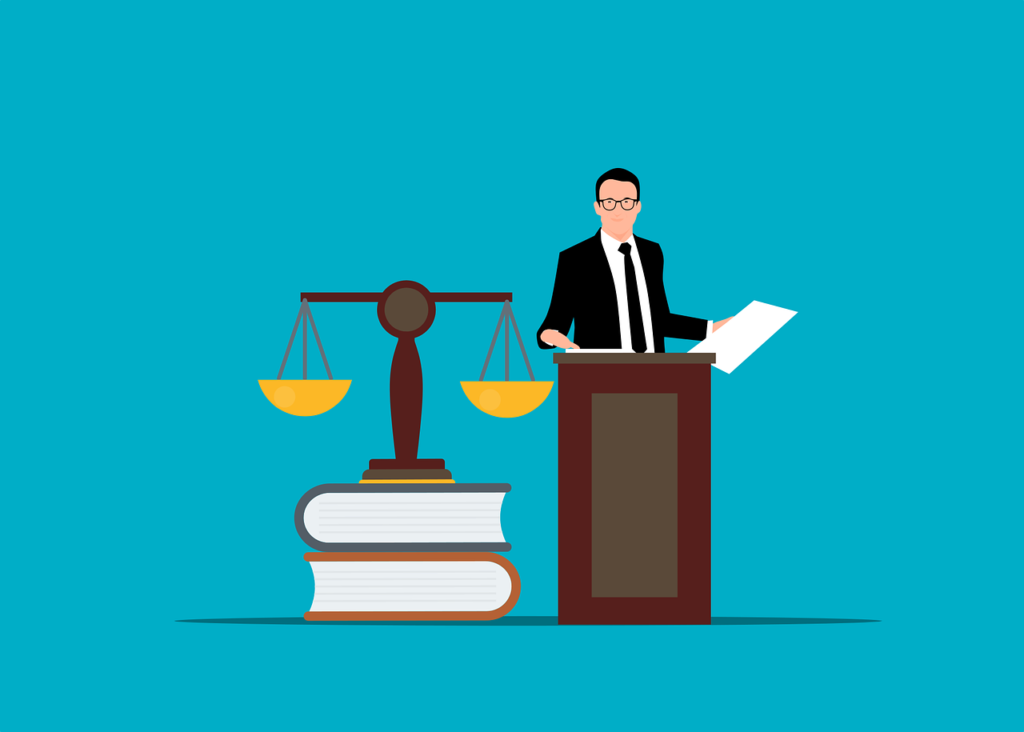Published On: 15th June, 2024

Authored By: Abhishek Varshney
IFTM UNIVERSITY, MORADABAD
Abstract
The entertainment industry in India has grown significantly during the last several decades. Nearly every industry, including finance, education, entertainment, and manufacturing, has seen a radical transformation since the dawn of the internet era. Internet services are now widely available, providing producers with a powerful platform to showcase their abilities and creative juices. Online streaming platforms have been more and more popular in recent years, which may be ascribed to the rapid growth of technology and the widespread availability of broadband connectivity. Netflix, Amazon Prime Video, Disney+ Hotstar, and other platforms are transforming the industry of entertainment by providing consumers with access to enormous collections of films, TV series, and original material. However, the emergence of internet streaming services has also given rise to certain copyright problems. These platforms offer a variety of content and make content recommendations based on your previous interactions with the site using artificial intelligence. Since no nation, outside of North Korea and China, has complete control over the internet, monitoring the OTT Platform is a difficult undertaking for any authority. We look at the complexities of copyright law and the difficulties Indian internet streaming services face under the regime of IPR in this Article.
Introduction
Over-the-top (OTT) streaming video services are those that are made directly available to consumers via the Internet. This platform has eclipsed cable, satellite, and other television.
In terms of functionality. In India, many OTT platforms are operating, including Netflix, Amazon Prime, Hot Star, Voot, and others. OTT platforms are free to stream content without intervention from any regulatory body, in contrast to cinema or television content, which is governed by the CBFC, BCCC, etc. Nowadays, few people openly admit to watching TV or going to the cinema. People are too busy using several internet platforms to watch video material on television or in movie theatres anymore. Film production and distribution, feature film production, documentaries, and web series distribution have all been included in over-the-top platforms, or OTT platform services. Over-the-top platforms originally served as content hosting platforms. Thanks to these large internet platforms, the consumption of video content has increased significantly in India during the past several years. Since OTT platforms are a new kind of entertainment in India, there are no laws or regulations governing them. These platforms offer a variety of content and provide content recommendations based on your previous engagements with the site using AI Algorithms. The majority of platforms that are entirely for-profit offer some of their material for free while also charging a monthly subscription price for exclusive Prime video.[1] The members of this contract must adhere to certain rules about the online service that is offered. Occasionally, objectionable content such as violence, nudity, profanity, and unedited video appears on online streaming platforms.
Understanding Copyright Law
The right to copyright is conferred upon the author of an original work of literature, music, film, or other artistic medium. This gives artists the exclusive right to duplicate, distribute, and display their works while prohibiting others from using or making money off of them without their consent. In India, copyright protection is governed by the Copyright Act, of 1957, which lays out the legal framework for preserving intellectual property rights. Section 13 of the Copyright Act 1957 protects all original works of literature, drama, music, art, cinematography, and sound recording. Unlike patents, copyright protects speech rather than ideas.
Section 31 D was established in 2012 to bring broadcasting and internet streaming services under the purview of the Indian Copyright Act, of 1957. Section 31D provides the statutory license and legal framework for the broadcasting of literary and musical works as well as sound recordings. This Section permits any broadcasting business to use a compulsory license to transmit any previously published music or sound work to its audience when paired with Rules 29 and 30 of the Copyright Rules 2013. However, opinions on statutory licensing of online streaming services have differed, primarily because the term “internet streaming” is not included specifically in the 2013 Copyright Rules.
Digital content complaint council (DCCC)
India is a prominent topic when it comes to the debate on content restriction on OTT platforms. The most recent proposal for legislation establishing the OTT platform and web channel regulation to remove pornographic content is evidence that online obscenity has caused controversy in the country and raised more issues than it has answered. The laws in this area will have an impact on the media and entertainment landscape. The Internet and Mobile Association of India (IAMAI) developed guidelines for online video streaming platforms’ self-regulation, which the Ministry of Information and Broadcasting has approved.
The Internet and Mobile Association of India has adopted a new material code (DCCC) to control content on online streaming platforms, leading to the creation of the Digital Content Complaint Council, an industry organization[2]. A number of items that discuss child pornography, terrorist acts, and disrespect for national symbols are prohibited by the code. It asked that the content be categorized and arranged by the platform owners according to different age groups of viewers. To identify the type of content, it is also required to have age-appropriate content for minors and a guiding statement that appears as a content descriptor on the platform display.
A number of items that discuss child pornography, terrorism, and disrespect for national symbols are prohibited by the code. The owners of the platforms were entrusted with classifying and arranging the content according to the audience’s age range. It is also required to identify the sort of content by using a guiding statement that is posted on the platform as a content descriptor and content that is suitable for minors [3].
Legal protections concerning OTT platforms
Due to the fact that the Cinematograph Act of 1952 only applies to movies intended for theatrical release, movies that are broadcast online do not fall under its requirements. It was necessary to govern this space because, unlike traditional cinema, OTT platforms enjoyed unlimited freedom. This led to several cases when a large number of complaints were registered on grounds of immorality, hurting religious emotions, pornographic material, etc. Any CBFC certifications for a movie do not apply to content that is live streaming on OTT services. The current laws in force in India concerning the content of over-the-top (OTT) platforms are:
Indian Penal Code, 1860: Under Section 293, it is illegal for anybody to engage in the actions of selling or disseminating obscene literature. Any person who has the intention of outraging the religious sentiments with malice is a punishable offense under Section 295A, releasing defamatory content is punishable under Section 499, and if/and when any person insults the modesty of a woman is punishable under Section 354[4].
The POSH Act (Protection of Children from Sexual Offenses): to safeguard kids from crimes committed both offline and online. One of the most important pieces of legislation that guarantees children’s protection from numerous crimes like sexual assault, other forms of harassment, and cyber pornography is this one.
The Indecent Representation of Women (Prevention) Act of 1986: expressly forbids the degrading depiction of women in print, film, television, and online media.
Information Technology Act, 2000: Section 67-A of the act punishes publishing or transmitting sexually explicit acts, etc. In electronic form. Section 67-B of the act punishes publishing or transmitting children in sexual acts, etc. In electronic form. Section 69A of the act gives the government the authority to restrict access to certain materials for public consumption.
“IT Rules “Guidelines for Intermediaries and the Digital Media Ethics Code, 2021 – After the Ministry of Information and Broadcasting (MIB) discussed and consulted with various stakeholders regarding any form of regulation of OTT platforms to make the sector more efficient, the Government of India released this piece of legislation that lays out the rules for the intermediaries to follow, which includes the OTT platforms under the Information Technology Act. The OTT platforms are required to self-classify into five age-based groups: U (universal), U/A (7 years), U/A (13 years), U/A (16 years), and A (adult). OTT platforms must provide parental control. Digital media must abide by the Cable Television Networks Regulation Act’s Programme Code and the Press Council of India’s Norms of Journalistic Conduct.
It also asks for hiring an Indian-based grievance officer who will reply to complaints within 15 days in order to establish a three-tiered grievance resolution process.
Additionally, there must be a separate self-regulatory organization of publishers made up of no more than two former Supreme Court or High Court judges, one eminent individual, or both [5].
The Digital India Act –
Digital India Act To Monitor OTT and Social Media Platforms[6]By the winter session of Parliament, the Ministry of Electronics and IT (meity) hopes to update the current IT Act 2000. The Digital India Act would cover web applications like the Met Averse and block chain in addition to social media and OTT platforms and online apps. It is stated that the proposed Digital India Act will oversee regulations governing e-commerce and cybercrime. Additionally, the DIA will be responsible for any content policy violations by OTT platforms like Netflix and Amazon Prime, including distributing false information or inciting violence. Everything digital, including social media platforms, OTT platforms, online apps, and web applications like the Met Averse and block chain, would be covered by the Digital India Act.
Conclusion
A process for resolving complaints has been established by the Digital Content Complaint Council (DCCC), which brings together most online streaming services. If the platform owner is unhelpful in resolving their problems, customers can file a complaint with the DCCC. The government promoted internet restriction by amending Section 79 of the Information Technology Act of 2000. Censorship is necessary for the internet streaming content seen on services like Netflix, Amazon Prime, Voot, and similar ones. The platforms must be able to self-regulate how online information is streamed. For content producers, there are also some legal considerations. They have to keep some things open, regardless of rights to copyright, trademarks, and other intellectual property, as well as privacy rights and other things. Along with creators, there are also rules for directors who are involved in producing content for the general audience. Concerns range from privacy to the right to publicity. More importantly, the Digital India Act would create guidelines to prevent the spread of misleading information and safeguard the safety of women and children. To prevent the spread of false information, the Digital India Act will also monitor the material on OTT services like Netflix and Amazon Prime. In this regard, the government will also release a set of “content standards” for OTT services. Working together, the government and OTT platforms may put a stop to this problem once and for all.
References-
[1] Anubhooti Saw, Censorship and OTT Platforms: Critical Analysis,Latestlaw.com, (July. 07, 2021),https://www.latestlaws.com/articles/censorship-and-ott-platforms-critical-analysis, (last visited on Nov 04, 2022)
[2] Exclusive: IAMAI’s new code for online content streaming sets up a self-regulatory body, incorporates penalties, https://www.medianama.com/2020/02/223-iamai-content-code-dccc/ (last visited Nov. 07, 2022).
[3] Majority of Indians Feel Censorship Should Be Mandatory for OTT Platforms, https://inc42.com/buzz/majority-of-indians-feel-censorship-should-be-mandatory-for-ott-platforms/ (last visited Nov 8, 2022).
[4] Ratanlal and Dhirajlal, Indian Penal Code, 1860, 35th Edition, 2021, Lexis Nexis
[5] Ministry Of Electronics And Information Technology, it (Intermediaries guidelines and Digital Media Ethics Code) Rules, 2021, G.S.R. 139(E). (February, 25, 2021) , https://mib.gov.in/sites/default/files/IT%28Intermediary%20Guidelines%20and%20Digital%20Media%20Ethics%20Code%29%20Rules%2C%202021%20English.pdf, (last visited on Nov. 7, 2022)
[6] Digital India Act To Monitor OTT and Social Media Platforms, Says Report, (August, 17,2022) The QUINT, https://www.thequint.com/tech-and-auto/tech-news/digital-india-act-to-monitor-streaming-social-mediaplatformsreport#:~:text=For%20OTT%20platforms%2C%20the%20Digital,and%20above%20the%20Censor%20Board.&text=The%20upcoming%20Digital%20India%20Act,development%20told%20The%20Economic%20Times. (Last visited on 9 Nov, 2022)





